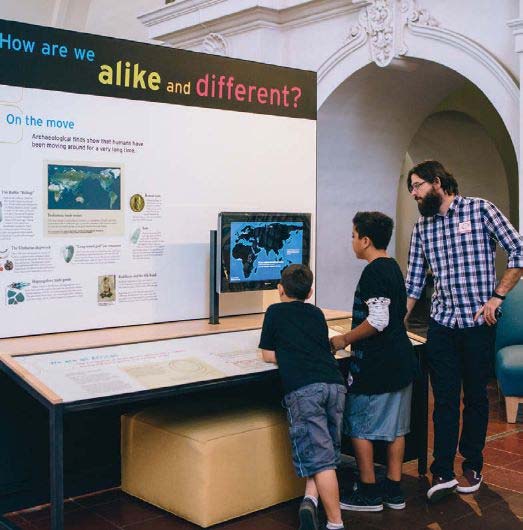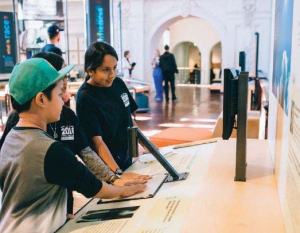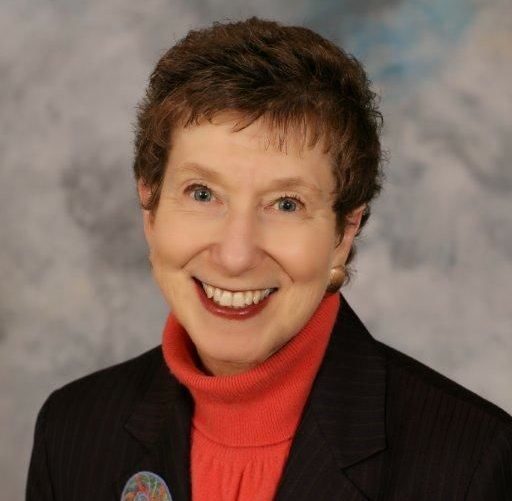
This article originally appeared in the March/April 2017 edition of Museum magazine.
This case study was a part of a series on museum leadership, developed for the career and leadership management workshop for participants in the International Program, held at the AAM Annual Meeting & MuseumExpo in May 2016. This program was made possible through the generous support of the Getty Foundation.
The Case
How does a new, untested director transform a static and financially challenged organization into a dynamic and relevant museum? By reshaping organizational culture, emphasizing values, taking risks, connecting to diverse audiences, and reminding all stakeholders about “what it means to be human.”
The Leader
Micah Parzen had never considered a career in museums before becoming the chief executive officer of the San Diego Museum of Man (SDMoM) in August 2010. Although he held a Ph.D. in anthropology from Case Western Reserve University. and had conducted extensive fieldwork in the Navajo Nation, Parzen earned a law degree and pursued a legal career, eventually becoming a partner in a San Diego law firm. Parzen served on the boards of the San Diego Volunteer Lawyers Program and of Elder Help (an organization serving senior citizens in San Diego), which he led as its president for two years.
Parzen’s law firm had had a longstanding association with SDMoM, with a partner usually occupying a seat on the museum’s board. In 2010, as he was being courted for this position in a meeting with the museum’s interim director and two museum board members, Parzen experienced a career-clarifying “light bulb moment:’ ”I had a passion for anthropology as a philosophical orientation to the world, and the job [of director] resonated with my values,” said Parzen. ”I needed a new path to nurture my soul!” He put himself into the director search. Although he had only a “raw and inchoate vision” for the museum’s future, it built on his passionate belief in the power of an anthropology museum to build community through increased understanding. and it led the board to offer Parzen the job. This meant leaving a firm where he had just been made partner, a profession he knew well, and a hefty paycheck. He took
the helm of an institution whose future success was anything but certain.
The Museum
SDMoM is situated in Balboa Park. site of the Panama-California Exposition, designed to celebrate the opening of the Panama Canal in 191& The central exhibit of the exposition, “The Story of Man through the Ages,” was assembled under the direction of noted archaeologist Edgar Lee Hewett, who became the first director of the museum when it was created after the exposition’s closing. Following World War II, the museum began to focus its collections on the peoples of the Western Americas Collections grew substantially over the decades, and today contain nearly two million individual objects, including important ancient Egyptian antiquities and objects representing Mesoamerican
civilizations.
In 2010, when Parzen assumed the directorship, the museum was in a period of transition its finances had been in deficit mode for many years.
The departure of the previous director had triggered negative press and the resignation of some of the museum’s trustees. Under the stewardship of an interim director, the museum was facing a difficult financial situation, no schedule for future exhibitions, and no strategy for sustainability.
Beginning the Transformation
Parzen acknowledged he was untested in his new role. Although he had never been a CEO, Parzen’s service as board president of ElderHelp had given him significant nonprofit leadership experience. Even more important, from his perspective, was his leadership on various soccer teams, including the Division 1 team at the University of California. Berkeley. Those soccer days taught Parzen such skills as “digging deep into your reserves of energy. even when you think you have no more to give,” inspiring the people around you. and functioning as part of an effective team.
At the museum’s helm, Parzen’s first order of business was to assess the current situation, craft an emergency budget plan, and create a new three-year strategic plan with a revised mission, vision, values, and springboard for future programs and initiatives. He secured the museum’s status as an Affiliate of the Smithsonian Institution. linking the museum with the Smithsonian brand and logo, some 200 national museum affiliates, and access to new resources, including traveling exhibitions and programs.
The new strategic plan, adopted in January 2012, steered the museum away from traditional artifact-based exhibitions to more relevant themes and experiences, beginning with a targeted focus on the tourists who visit Balboa Park each year. All existing programs were subject to cancellation; if there was no demonstrable ROI (return on investment), the program was eliminated. Parzen began to rebuild the board and form a new staff team. recruiting people with new sets of skills to achieve the new goals.
During 2011-12, two exhibitions provided turning points. In 2011, Parzen leased “Race: Are We So Different.” a traveling exhibition developed by the American Anthropological Association. Parzen found it relatively easy to raise foundation money to support this timely exhibition; it was popular with visitors, and it made a clear impact on visitor understanding. One year later, the museum displayed “Ramp It Up: Skateboard Culture in Native America.” an exhibition that originated at the Smithsonian National Museum of the American Indian and was touring via the Smithsonian Traveling Exhibition Service. To make the exhibition more participatory, Parzen challenged his staff to enhance it with a functioning half-pipe (a skateboard ramp) within the museum. This would serve as the platform for professional skateboarding demonstrations as well as regular public “free skate” sessions. From Parzen’s perspective, this was a pivotal moment: “We learned that we could take risks, even when we didn’t know what would happen.” Other exhibitions exploring women’s empowerment. people with special needs, human rights, and “Beerology” followed. These exhibitions tested-and-demonstrated the museum’s new mission as “inspiring human connections,” bringing the human story up-to-date with explorations of contemporary, relevant. engaging. and often contested themes. Attendance, revenue, and philanthropic support began to climb.
A New Challenge: Border Crossing: Changing the Conversation about Undocumented Immigration
In early 2011, representatives from all Balboa Park institutions, as well as other influential members of the community, held a two-day charrette to plan for the park’s 2015 centennial In the brainstorming that occurred, Parzen proposed a participatory program that would deal with contemporary immigration. Given San Diego’s proximity to the Mexican border and contemporary national and local debates, the people in the room recognized the audacity of the idea. Nonetheless, there was much enthusiasm. The new project, christened Border Crossing, was inspired by Parzen’s knowledge of (and participation in) Follow the North Star, a program developed by Conner Prairie Interactive History Park in Fishers, Indiana. In that program, participants assume the roles of escaped slaves in early 19th century America and must evade their captors in an outdoor experience that uses the various historic structures and setting of the living history park.
Over the rum two years, Border Crossing began to take shape as a signature program that would take two universal human attributes-migration and boundary creating-and situate them within the context of today’s immigration debates. Parzen noted, “We experience this clash of universal impulses in a very particular way here in San Diego, at one of the most-crossed borders in the world.” Border Crossing would offer various perspectives, and occasion facilitated dialogue and discovery about immigration.
Parzen began working with John Fanesti, who had been involved with Friendship Park (El Parque de la Amistad) for many years. Friendship Park is an historic meeting place on the US/Mexico border. In the United States, Friendship Park is inside California’s Border Field State Park; in Mexico, El Parque de la Amistad sits beneath the famous lighthouse (“El Faroj”) in Playas de Tijuana. As its website notes, “For generations, people of good will from both nations have gathered here to visit with family and friends ‘across the line.'” Fanestil helped Parzen create an advisory committee of community leaders, scholars, US Border Patrol officials, and others. According to Parzen, “Around the diverse table of this committee, we were creating and holding the space that we wanted the program to inspire: civil, if sometimes heated, conversations and dialogue”.
Parzen also forged a partnership with the nearby Tony Award-winning La Jolla Playhouse, “dedicated to advancing theater as an art form and as a vital social, moral, and political platform.” One of its successful programs, Without Walls, took performance beyond the boundaries of a traditional theater space and out into the community. The theater helped recruit a noted Latino playwright and a Latino director who would create the program script and oversee the experience. Recognizing the need for expertise in facilitating the post-experience participant dialogues, Parzen also partnered with the National Conflict Resolution Center, an organization dedicated to empowering people and transforming cultures”‘ and specializing in “collaborative dispute resolution and conflict management”.
Thus, Border Crossing was to be a collaborative, vivid, first-person, “site-specific theater program” that would “immerse people in the experience of crossing the border illegally from Mexico into the United States.” Promotional materials described the experience in which “[a]udiences will encounter actors portraying migrants attempting to cross the US/Mexico border, using the hidden spaces in the Museum o£ Man and the canyons of Balboa Parkas a stage. In their journey, they will interact with migrants, ‘coyotes’ [In border terminology a coyote is the shadowy figure who guides illegal immigrants, usually for a hefty price, past immigration authorities and into the US], Border Patrol agents, loved ones on both sides of the border, and more;” After traveling through this environment, participants would engage in a facilitated 30-minute debriefing session. The museum raised $125,000 for the project, largely to support the director, playwright, travel, and other developmental costs. This was a well-publicized. highly visible project.
The Decision to Cancel the Program
As project planning proceeded, problems and tensions began to surface. There was no single point person to wrangle the complex and collaborative project Communication, coordination, schedules, and interpretation posed challenges; and the playwright became involved with other career opportunities that conflicted with the project There was no existing infrastructure in place to accommodate the effort The project raised sensitive issues that the museum had never confronted before. The program. initially planned for 2015. had its launch delayed to 2016, with the date change announced at a large stakeholder meeting.
The schedule change created additional challenges, with other key project personnel running into scheduling conflicts and needing to withdraw.

In addition, debates ensued about how many voices and perspectives could authentically be conveyed in the program. Unlike the Conner Prairie program. which dealt, albeit powerfully, with an episode in the past, Border Crossing was wading into current controversial issues. As the project evolved, some of the proposed perspectives were eliminated from the evolving script, creating tensions among some stakeholders. Working together with the program’s Latino playwright and Latino director, Parzen and his team decided to shift the emphasis of the program
The original plan was to present a variety of perspectives, including immigrants, Border Patrol agents, and ranchers. Going forward, the program would focus on the diversity of perspectives among immigrants themselves at various stages of the border crossing experience. The team’s decision was based on the recognition that the media dominated narrative about immigration typically minimizes the perspective of immigrants. This reflected the museum’s desire to “go deep” rather than “go wide,” with a more meaningful result in mind.
In late 2015, these tensions took their toll on the project. Some stakeholders, including some trustees, weren’t comfortable with the idea of emphasizing immigrant perspectives over giving equal time to those of non-immigrants. Without a clear path for successfully navigating these mounting tensions, Parzen and his team made the extraordinarily difficult decision to halt production, rather than forcing an institutional implosion. Parzen met individually with the key partners, supporters, and community members before sharing the news more broadly, via a March 18, 2016 e-mail, to some 100 stakeholders. “We realized that we simply lacked the organizational readiness for such an ambitious project at this point in our institutional trajectory.”
In this e-mail. Parzen noted. “While Border Crossing may not have come to fruition as we had hoped, the work we did on the program invaluably contributed to our understanding of who we are and what we stand for as a museum. The lessons learned will serve us well as we continue to develop visitor experiences that don’t shy away from difficult topics, but rather fully embrace them knowing that this is where our greatest growth always occurs.” Parzen shared the e-mail-and many positive community responses to it in one of his regular “Mission Moment Monday” e-mails to his board, continuing his policy transparent, candid, and regular communication to staff, board, and community members.
Results and Consequences
Many of the lessons of Border Crossing have been incorporated into the museum’s new master plan, approved by the board in February 2015-The comprehensive plan uses “contemporary and popular culture as a springboard for exploring the past, present and future of what it means to be human.” Its goal is to “make positive change in the world”. Its central metaphor is the “visitors’ journey,” drawing on the immersive experience envisioned in Border Crossing.
The plan emphasizes such organizational and individual qualities as “nimbleness, flexibility, innovation, experimentation, and an awareness of how our efforts, day-to-day, connect with our mission, vision, and values.” It states that “world peace starts at home,” focusing as much on organizational culture (internal transformation) as the museum’s outward facing programs and experiences. It posits a “work culture that values calculated risks,” and takes seriously the importance of hiring for values, adequate compensation, and financial transparency. The museum
has purchased the “Race: Are We So Different” exhibition and frames it within today’ a national and community debates about racial inequities. The current board chair is Latino. Museum attendance continues to rise dramatically. admissions revenue has quadrupled since 2010, and staff and operating budget have doubled. The new plan emphasizes evaluation, outcome metrics, and targeted marketing to diverse audiences. Major efforts are underway in “decolonizing the collections” and exploring the implications of the means by which some of the holdings were acquired. Most importantly, Parzen noted, “we’re getting better prepared for dealing with these topics. We are better listeners. We can convene conversations; the community tells us how to get there. This [Border Crossing] experience has radically changed our efforts on inclusion and diversity, for staff and board.'”
Marsha Semmel is principal, Marsha Semmel Consulting; senior adviser, National Center for Science and Civic Engagement; faculty in New York’s Bank Street College graduate-level Leadership in Museum Education program; and former Interim director and deputy, Institute of Museum and Library Services (lMLS).








